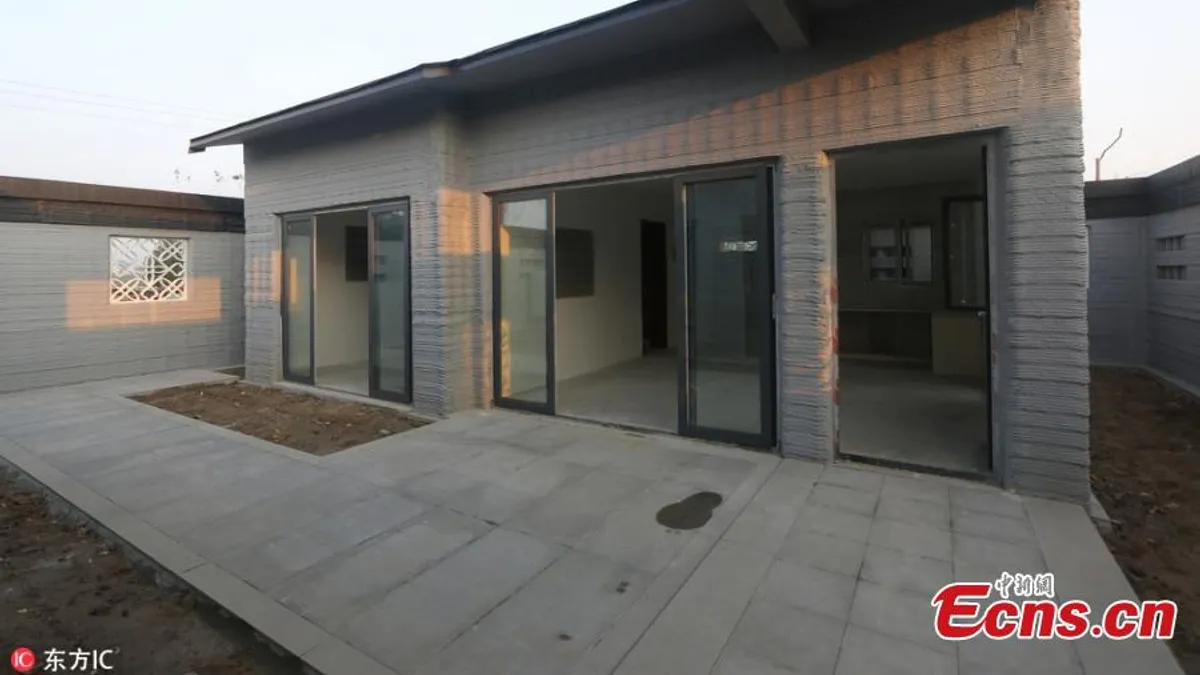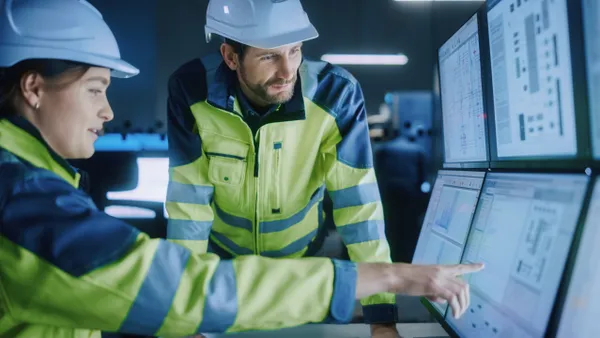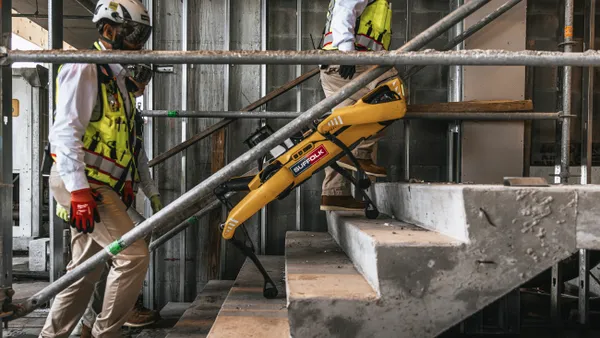Dive Brief:
- A 3-D-printed, single-family house in China's Shandong Province joins the growing number of freestanding structures created using additive manufacturing technology, according to 3DPrint.com, evidencing its potential for residential and commercial construction.
- The concrete structure, which took two months to build using 3-D printers measuring 20 meters (66 feet) wide and 6 meters (20 feet) tall, is the first phase of an "ongoing park project," according to its developers.
- The project team estimates construction costs at roughly 5,000 yuan ($750) per square meter, and it expects that figure to drop as the technology improves.
Dive Insight:
3-D printing for construction is gaining in popularity in China, in particular, where builders have also constructed a six-story apartment building using the technology. While advances in 3-D printing stateside offer architects and developers an interesting, vertically integrated design and production tool, the technology has yet to achieve wide-spread adoption in construction projects, instead focusing mostly on parts and components.
Cost is a primary reason for the small-scale focus, and questions of job site supply logistics and general assembly labor will likely need to be addressed for 3-D printing to be seriously considered in any kind of production builder or commercial construction capacity. How close do 3-D printers need to be to the job site in order to be useful? Who will operate them, and how might they impact project management decisions? Those questions are only beginning to be explored.
Modular construction is one opportunity for 3-D printing to scale up. Last year, architectural firm Skidmore, Owings & Merrill partnered with the U.S. Department of Energy's Oak Ridge National Laboratory, housing manufacturer Clayton Homes, and the College of Architecture and Design at the University of Tennessee to create a panelized enclosure and companion vehicle, both 3-D printed, that share and store renewable energy to stay off-grid during periods of peak demand.
Proof of concept isn’t necessarily a proof of economics, however, and it may be that 3-D printing will offer more value to the construction industry — and thus experience greater investment — by providing machining and parts manufacturing to support crews and equipment during traditional building processes.













